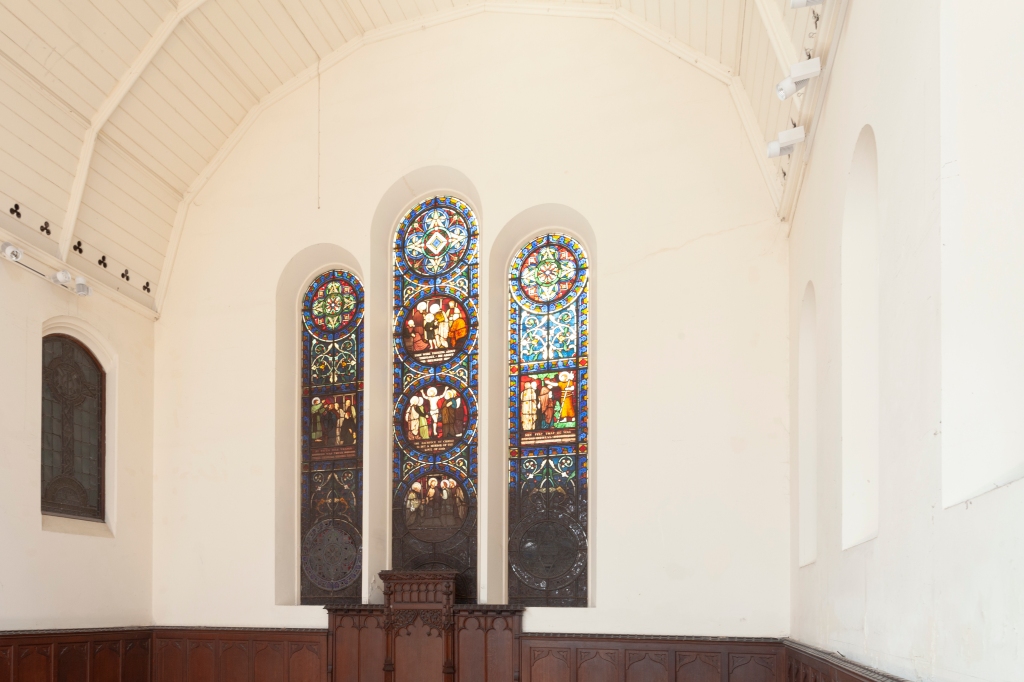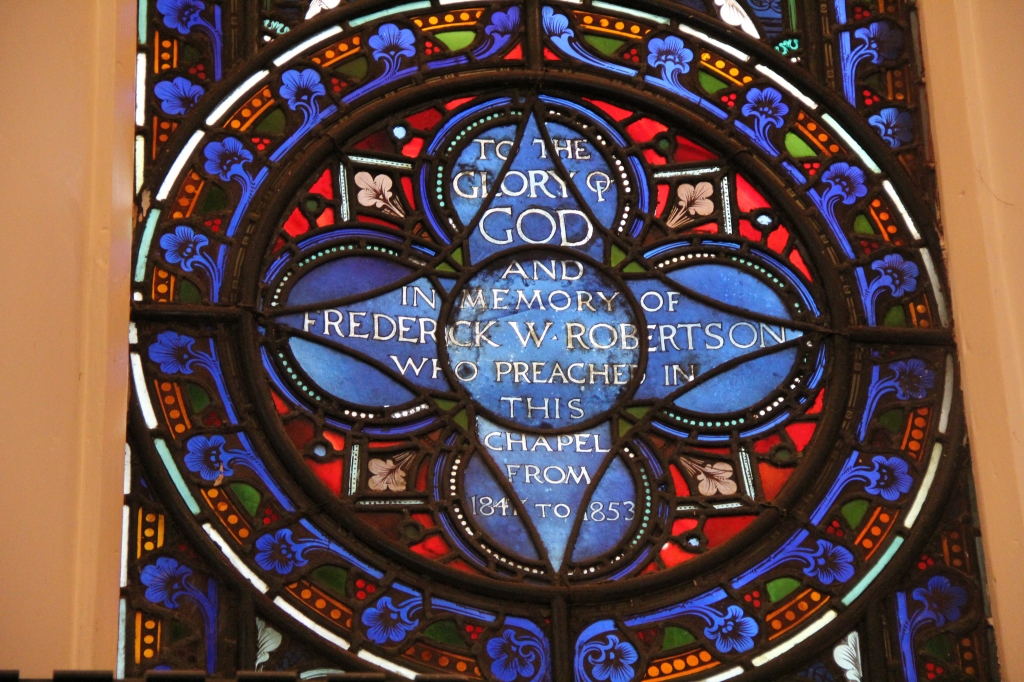The Stained Glass Memorial Windows
When the chancel was added in 1869 three separate, tall, round-arched windows were placed behind the altar. The stained glass in these windows commemorates Holy Trinity‘s most charismatic preacher, Frederick William Robertson, (1816 – 1853). They were installed some 16 years after his death. They are all dated 1869 and attributed to designer Henry Holiday and manufacturer James Powell and Sons (1).

Notably the windows depict St Paul’s preaching at Athens, the window design is based on the famous Raphael cartoon and inscribed ‘St Paul’s sole weapon was the truth’ Another roundel depicts Christ debating with the doctors in the Temple and is based on a painting by Holman Hunt.

The British Museum states: “The Whitefriars Glass Works were purchased by James Powell (q.v) a wine merchant, in 1834, as additional employment for his three sons, Arthur, Nathaniel and John Cotton. Nathaniel’s son Harry (1853-1922) (q.v.), a man of extraordinary talent as designer, historian and scientist, entered the firm in 1873 and together with his cousin, James Crofts Powell (1847-1914), developed radically new forms, colours and decorative techniques, as well as creating special industrial glass for scientific uses” (2).

James Powell & Sons recruited freelancer designers such as Edward Burne-Jones and Henry Holiday. Holiday and Burne-Jones’s influence developed a Pre-Raphaelite style in figure drawing that sustained through to the 1920s. They further modernised in the mid 20th century through working with artists such as E. Liddell Armitage and James Hogan.
They closed their studio in 1973 and the firm in 1980, they survived far longer than other Victorian stained glass firms (3).
The windows were designed by Henry Holiday (1839-1927). He was an English historical genre landscape painter, stained glass designer, illustrator and sculptor. In 1861 Henry accepted the job of stained glass window designer for Powell’s Glass Works in London, after Edward Burne-Jones had left to work for Morris and Co (4). He ended his association with Powell’s to establish his own workshop in 1890. From about 1900 he even made his own glass at the workshop (5).
Come and see Holy Trinity’s stained glass windows during any of Fabrica’s exhibitions or events on site. We host volunteer led heritage tours throughout the year. Keep up to date with Fabrica’s news and events through a mailing list, which you can sign up to here.
References
(1) www.stainedglassrecords.org.uk
(2)https://www.britishmuseum.org/collection/term/BIOG76841
(4)http://stainedglass.llgc.org.uk/person/20
